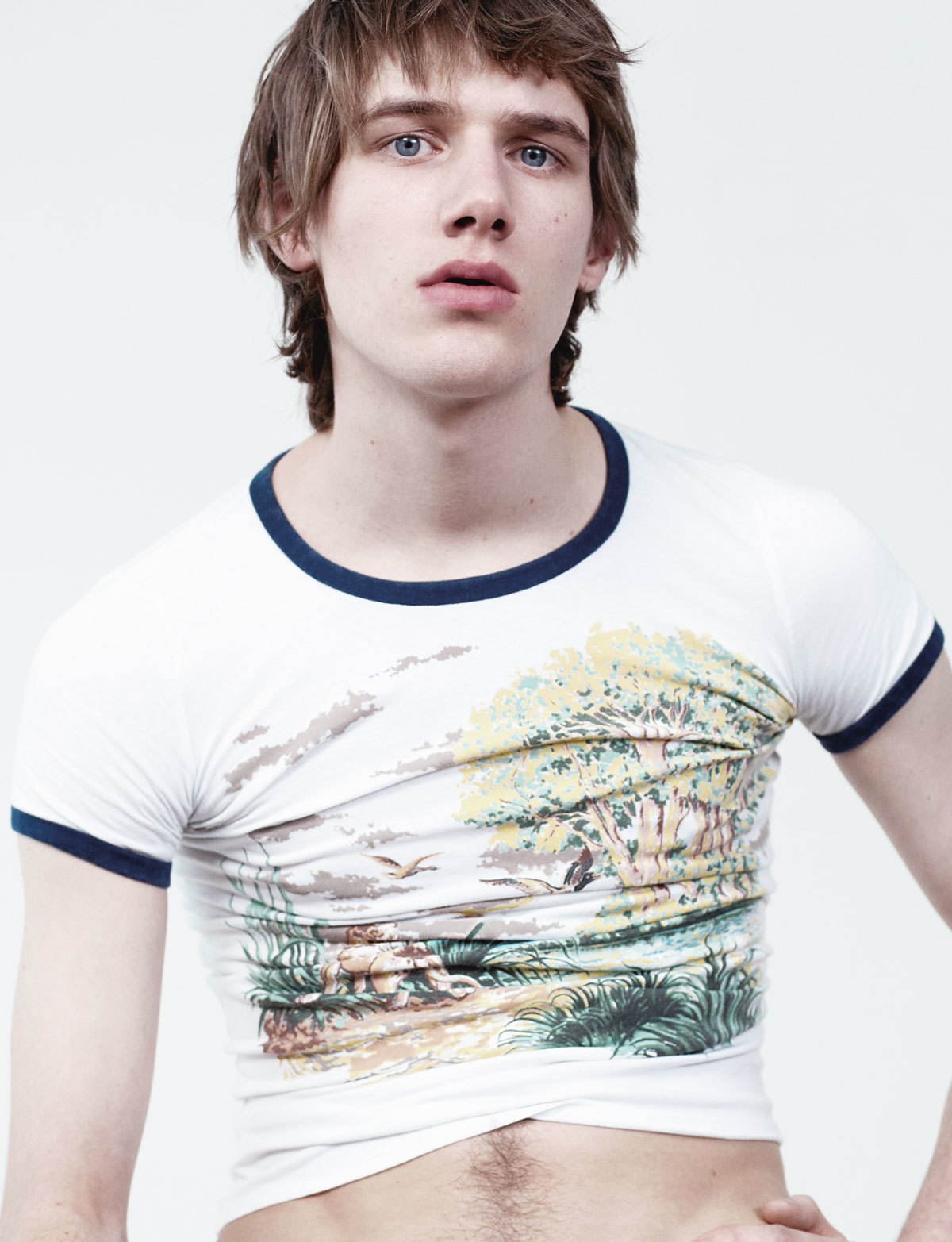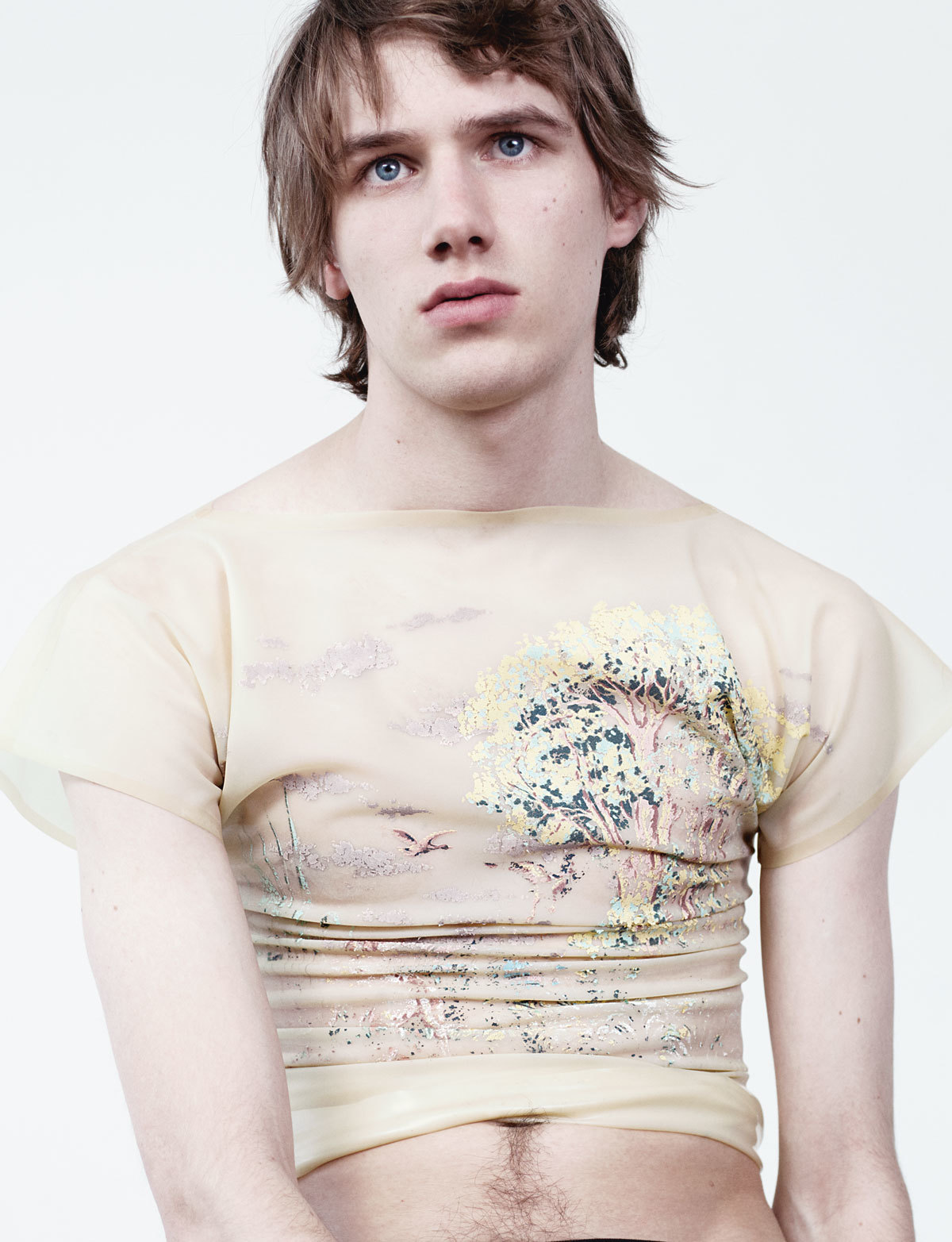
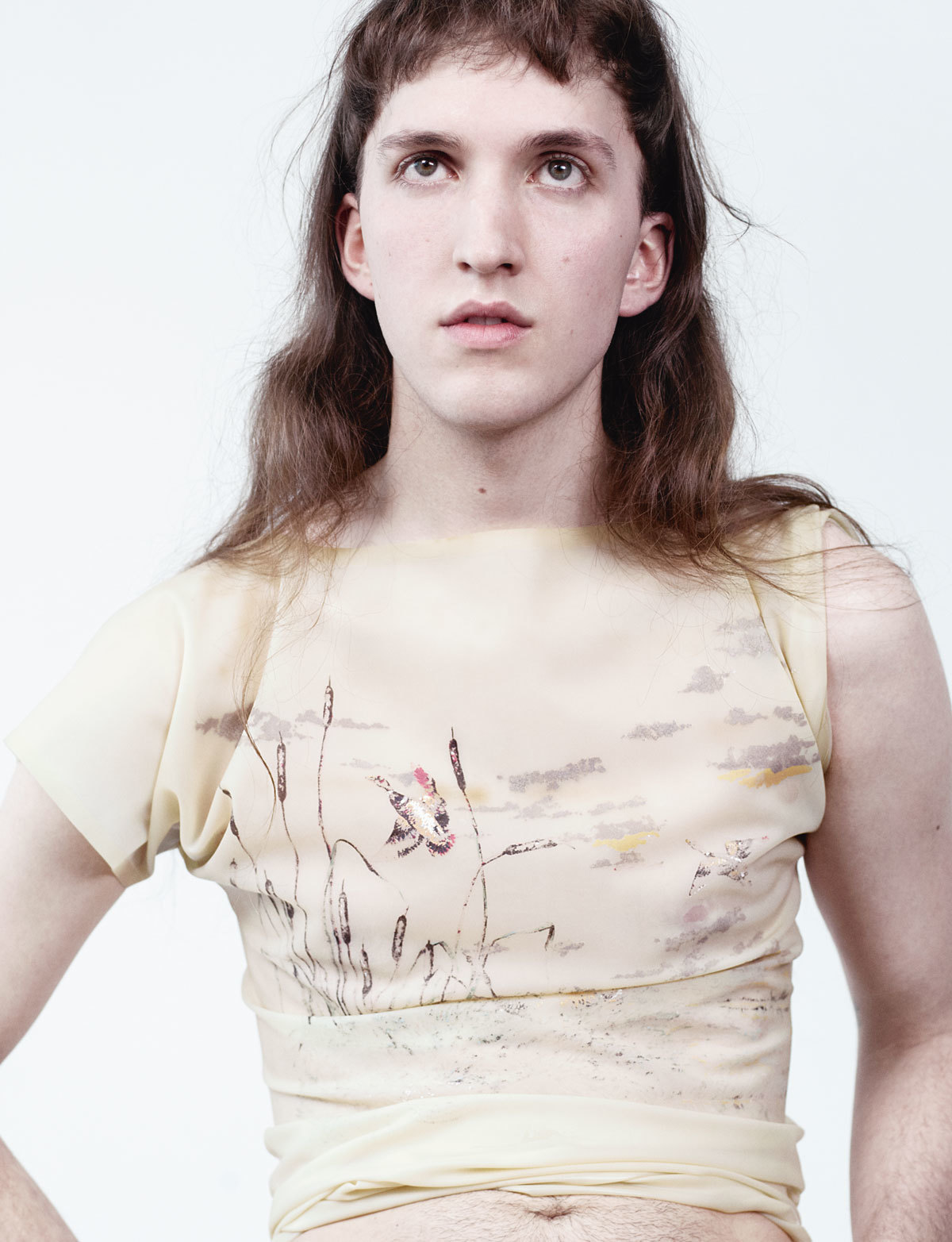
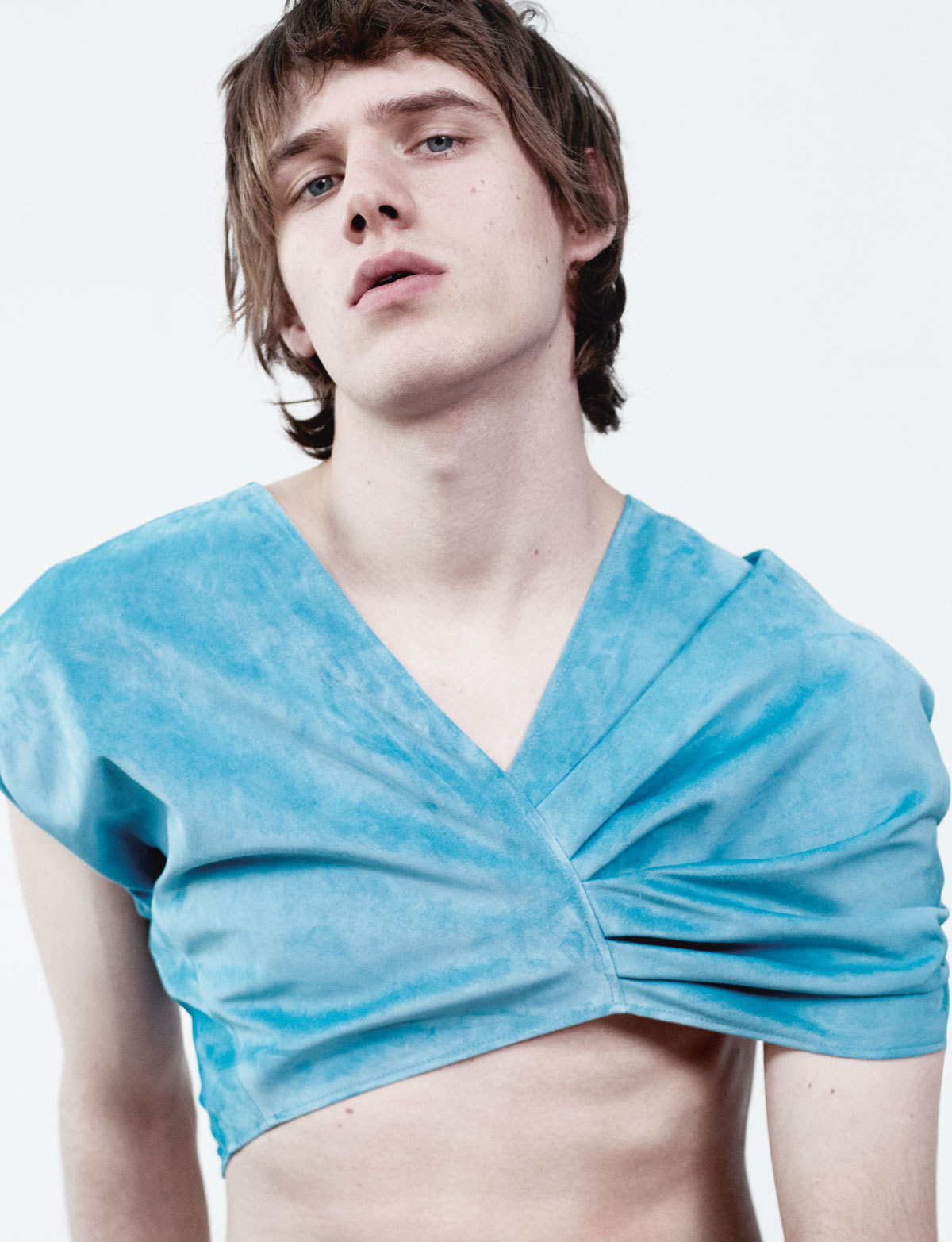
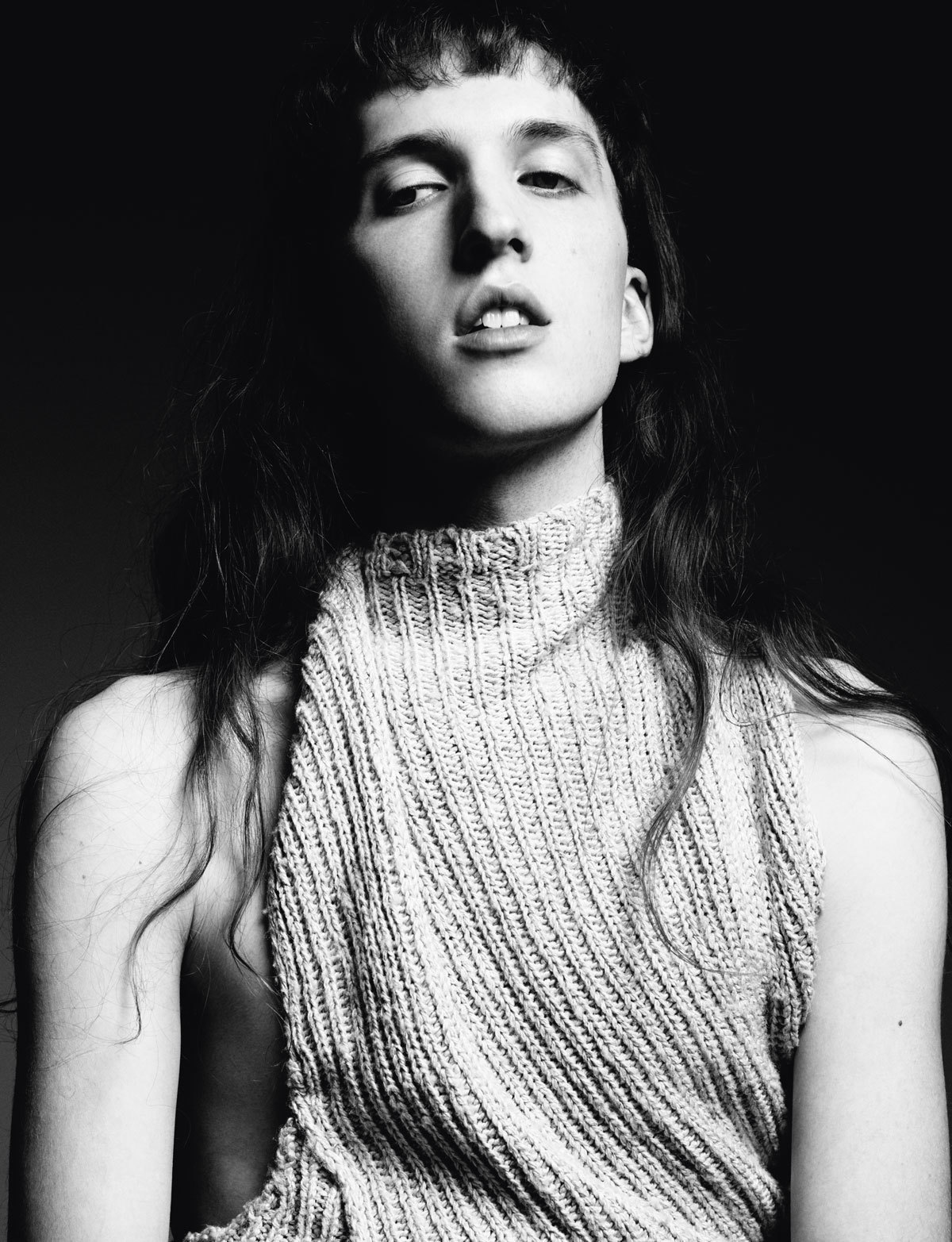
2015 is set to be J.W. Anderson’s year. Ever since he was appointed Creative Director of Loewe, one of Spain’s most iconic luxury brands, in September 2013, his life has been a whirlwind of meetings, flights, Eurostars and collections, but that’s just the way he likes it. Jonathan is dressed in his trademark blue jeans and Converses when we meet in his studio, a sunlit three-storey converted warehouse off Dalston Lane, in Hackney, east London, and as we talk, it is clear that he thrives on the hard work that running two successful brands demands. “Bit by bit I’ve learned how to discipline myself, like an athlete would,” he reveals. “I still haven’t been able to get rid of the cigarettes, but I’m up by 6am every day and I go to the gym. I’ve also learned to not just eat Kit Kats and drink loads of coffee because I want to be ‘on’ all the time.”
“On all the time” is perhaps the most fitting way to describe Jonathan. Ever since he exploded onto the scene in 2008 with his inaugural menswear collection, he has worked tirelessly to establish himself as a design force to be reckoned with. Today his J.W. Anderson collections are among the most highly anticipated at London Fashion Week, while his work at Loewe – despite being in its infancy – has put the Spanish luxury brand firmly back on the fashion map, and cemented the British designer’s position as a key player on the fashion world stage.
Today Jonathan splits his week equally between London, where he works on his own label, and Paris, where he works on Loewe. “As a designer, you can’t have a bad day,” he says. “You have to be on it with every team, and every meeting. You have to be positive. To be able to do this amount of work at the level of a luxury group takes discipline.” With both brands offering menswear and womenswear, and J.W. Anderson offering pre and resort collections, Jonathan designs a whopping, not to mention awe-inspiring, 10 collections a year. It’s enough to make even the most seasoned designer break out into a sweat, but not Jonathan. “Ever since I was a child, I can’t [stand] being bored,” he confesses. “I love the adrenaline. Maybe in ten years’ time I won’t, but at the moment I’m really enjoying it, I love being challenged. My brain is continually getting more fuelled up. It’s great!”
As with everything in Jonathan’s world, becoming the Creative Director of Loewe demanded an all-or-nothing approach. “I looked at the formulas Loewe had adopted before, and what previous designers had done, and I thought I needed to be more brutal,” he reveals. “I had to change the logo, to take the brand back to the essence of what it is. Yes, Loewe is a leather house, but it can’t just be about leather.”
Appointing legendary art directors Mathias Augustyniak and Michael Amzalag of M/M (Paris), Jonathan set about breathing new life into the Spanish heritage brand from the logo out. Inspired by a typeface created by German typographer Berthold Wolpe, the new logo is modern and iconic, without losing any of its Spanish soul. It’s a brilliant piece of design. “It’s very punchy,” Jonathan agrees. “It’s cool, and it feels modern, but not too modern; there’s a balance to it.”
With the new logo in place, Jonathan spent his first year at Loewe initiating himself with the brand. He moved the creative studio from Madrid to Paris, recruited new members to the design team, and spent hours trawling the archives to really get under the skin of the house. “There were a lot of people I wanted to bring in, a lot of designers that I’d always wanted to hire,” he says. “It was really great to go, ‘Let’s get the dream team together!’ I believe in Loewe ten thousand million percent. I know exactly where it should be in five years. I know where we’re going.”
Jonathan’s clarity of vision is nowhere more apparent than in the stunning imagery he has commissioned for the house. From ad campaigns to look books, in one short year he has crafted a distinct identity for the Loewe boy and girl, and we’re hooked! To create Loewe’s first advertising campaign, Jonathan worked with Steven Meisel, re-appropriating images from a 1997 Meisel Italian Vogue shoot starring Amber Valletta and Maggie Rizer and piecing them together with contemporary images. “I’m very proud of the campaign,” he says. And so he should be. “Being able to [use] images from the past and not feel precious about them is a fundamentally different way of looking at advertising and fashion imagery.” Jonathan teamed up with Meisel again for his spring/summer 15 menswear campaign, which features a bold self-portrait of the legendary photographer kissing another man.
Offering up new ways of experiencing and interacting with the fashion industry is Jonathan’s forte. Working with stylist Benjamin Bruno and photographer Jamie Hawkesworth, he presented his debut Loewe menswear collection in the form of a limited edition hardback book. Needless to say, it was an instant collector’s item. “I was looking at a new type of wardrobe, so I wanted a new way of presenting menswear,” he says of his decision to bypass a traditional catwalk show. “It made sense for me to do a book or publication, because ultimately it’s about manipulating the menswear wardrobe.”
Jonathan presented his debut Loewe womenswear collection at the UNESCO building in Paris on September 26, 2014. As guests took their seats around Isamu Noguchi’s sculptural garden, the excitement was electric. i-D cover girl Julia Nobis opened the show wearing a calf suede patchwork dress, stitched together in desert gold. Skirts were slashed diagonally from the waist, to reveal flashes of fraying fabric, and halter neck tops came bound to the body in a style reminiscent of the ancient Japanese art of Kinbaku. The focus was on texture: raw, organic, sensual and majestically frayed. These were clothes you wanted to run through your fingers. There were wide-legged leather trousers in black, red, pink, orange, yellow and blue, and a series of silk T-shirts depicting traditional hunting scenes from the Loewe archives. It was a beautiful and competent debut that suitably whetted our appetites for the season ahead. “It was a start,”Jonathan says bashfully. “It’s going to take five years to work out the Loewe woman. One season it might be extremely organic and then it might go a bit harder, and then there might be no leather, and then all cotton… Consumers today want to be challenged; they want to see newness, because ultimately newness is the key.”
Over coffee, we discuss how working for an LVMH brand has affected Jonathan’s design process, his thoughts on the current state of the industry, and the impact of digital and fashion criticism on designers today.
Do you read reviews?
Yes. I went through a period a year and a half ago where I didn’t, because I didn’t really know whose viewpoint I believed in. Now I have a very Zen approach, and after the show we all read for two or three days. If a review is written well and accurately and is constructive, then you know what people want from you. It’s very difficult to understand what they want if it is written in a narcissistic way and it’s more about the writer. There are good and bad things in everything, and I think sometimes we forget that.
Do you think criticism is important in the fashion industry?
Criticism is extremely important, because it’s the only regulator, especially in a world run by advertising. I take good press and bad press as equally important. Sometimes the shows that got the shocking reviews were actually our best shows, because they didn’t make sense [in] the moment, which is great. I love Suzy Menkes because she has a viewpoint. There’s nothing more exciting than reading a review by someone who has a history in fashion. We need more journalists working in fashion at high-level publications. Yes, fashion is a runway – it’s about the image and the collection – but ultimately it’s about good business. This is not art.
Is the idea of fashion as business something you’ve become more aware of since working with LVMH, or is it a mindset you’ve had from the start?
I have always been quite blunt about it. I would love to be an artist, but I’m not. I make things – bags, shoes, T-shirts – and they’ve all got a price and they all depreciate. I have to sell you the dream. And I have to make you feel good.
Going forward, what role do you see digital playing in the industry?
I’ve always embraced digital. Digital can never be approached in a corporate way, because it’s an organic medium. What’s great about it is that it gives power to the people, and that’s what I love.
In many ways digital has taken the power away from magazines, because it enables designers to put their own message out there.
I think that’s great. I want to be interacting with my customers. If I’m selling something to them they need to believe in what I’m about. Ultimately, when you decide to become a designer you cannot think that you are going to sit in a locked cupboard somewhere. Young people do not work that way. They want to know what you’re about. As time goes on that’s harder and harder to keep up with. My life in the last year and a half has completely changed. My diary is [full] until the end of the year – per hour, per day.
Does that freak you out?
No, because I don’t have to deal with it. People tell me where they want me to be and I’ll be there. Sometimes I have to pinch myself to remind myself where I am.
I can imagine, especially because these days you have to be so much more than a designer, you have to be a showman and the face of your brand too.
Which is a lot of pressure. I can go to Japan and I might do 20 or 30 interviews back-to-back. One week I might be doing 12 shows, or 12 portraits. This job is not just about London; there’s Taiwan, Latin America, North America, Canada… You’ve got all these different countries and you have to give [all of them] the same. I would never give anyone less in an interview or in a picture. But after a while there are moments when you don’t know who you are.
What about the fashion show? Do you think it’s still relevant?
I have been through moments where I thought the fashion show was going to die. It’s equivalent to theater. Just because film came out, it didn’t push theater to its end. The fashion show has become more important in the digital world because the content that’s created from each event is so huge. You have the magazines that commentate, the social media imagery, the street style features… By the time you’ve done a show, you’ve got a million pictures everywhere, so the show technically becomes more important.
Do you enjoy putting on a fashion show?
I do enjoy it, because it’s closure. A video doesn’t give me closure, but when a show ends, it ends; you are over the collection, so you can start the next one.
What do you think is the biggest misconception about you as a designer?
Fashion washes you into being some sort of personality. People think I’m extremely difficult, but I don’t really care. I know what I want. Some people think I have an obsession with gender when I don’t. Nothing is more boring than the idea of that. I like the idea of mundaneness, which is just clothing. I hate androgyny – that’s something that really bugs me.
If you could change one thing about the industry, what would it be?
I would like to see younger people in the industry. I would like to see my age bracket move up again. We need new viewpoints. The world has changed. The way people communicate has changed. Fashion is about communication, and the next generation who are about to start spending money communicate very differently to the generation before them. Their landmarks are different. If the editors and the fashion designers are not talking to that generation in the right way, it doesn’t work. It’s time for a generational shift. No one is going to let 12-year-olds run the world, but you would hope that by 30 we could start.
Credits
Photography Willy Vanderperre
Styling Benjamin Bruno
Hair Mari Ohashi at LGA Management
Make-up Lynsey Alexander at Streeters
Nail technician Anatole Rainey at Premier Hair And Make-Up
Set design Emma Roach At Streeters
Lighting technician Romain Dubus
Photography assistance Corentin Thevenet
Digital operator Olivier Looren at Dtouch.
Styling assistance Natalie Cretella, Shaun Kong, Priscilla Teko, Sabrina Diamantopolous
Hair assistance Rogerio Da Silva
Set assistance Warwick Turneroakes, John Karsenty
Production Floriane Desperier
Models Louis Bauvir at Hakim Model Management. Nick M at Tomorrow is Another Day.
All clothing worn throughout Loewe spring/summer 15 womenswear.
